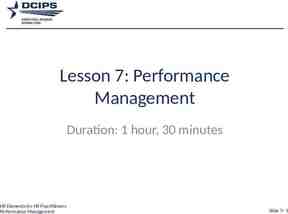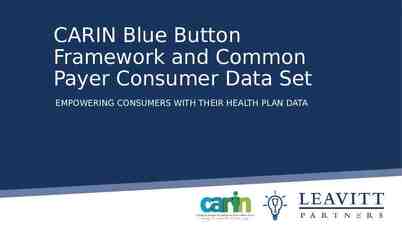MCH – Introduction A.A.TRIVEDI
20 Slides416.00 KB

MCH – Introduction A.A.TRIVEDI

MCH (Maternal and Child Health) MCH is a promotive, preventive curative and rehabilitative health care to mother and children. Health care to a special and vulnerable group Children of 5yrs of age Female of reproductive age group (15-45 yrs ) MCH care includes all the activities which promotes health and prevent health problem of mother and child.

Why women and children Forms priority group in any community Forms 60-70% of population in developing countries In India Women (15-45) – 19% Children ( 5yrs) – 40% Vulnerable to disease, disability and death Women – Child bearing Children – Growth Development Survival

Objectives of MCH care Reduction of morbidity and mortality rates for mother and child Promotion of reproductive health Promotion of physical and psychological development of children.

Components of MCH care (Sub areas) Maternal health Family planning Child health School health Handicapped children Care of children in special settings like day Care centers

Why - Mother and child combined ? Considered as one unit – During ante-natal period child is a part of mother only and obtain all his building material and oxygen from mother. Child health depends on health of mother Healthy mother provides healthy child Certain diseases of mother during pregnancy have effects on foetus Even after birth child is dependant on mother for nutrition up to 6 – 9 months of life. Mother and child un-seperable – post-natal care. Mother is first teacher of child

Who provide MCH care In past MCH services were fragmented Current trend is to provide MCH services and Family planning services through Family Welfare services. MCH services should be flexible based on local community needs which are based on Social and economical status Local customs and traditions Status of women Level of urbanization and migration An Obstratisian and Pediatrician joins hands and link themselves with PSM

Common MCH problems Malnutrition Infection Consequences of unregulated fertility Malnutrition Pregnant female LBW, Anemia, PPH, Nursing women Children Two most important period are intrauterine life and weaning period

Common MCH problems Infection Maternal infection can cause Growth retardation Abortion LBW Puerperal sepsis Infection of children Diarrhoea RTI Chronic infection like Malaria, Tb Consequences of Uncotrolled Fertility Increase prevalence of LBW Anemia Abortion APH

Maternal Health Each year in India, 30 million women experience pregnancy and 27 million have a live birth Of these, over 100,000 maternal deaths and one million newborn deaths occur annually. Despite a series of programmatic initiatives, there is little evidence that maternity has become significantly safer over the last 20 years. Current MMR is 407/100000 live births

Child Health Each year 27 million infants are born in India. Around 10% of them do not even survive to 5 years of age. Nearly half of the under 5 deaths occur in neonatal period. Over the decades there has been a declining trend in infant mortality rate, neonatal mortality rate and still birth rate. Prematurity is a major cause for both neonatal and infant deaths

COMMON CAUSES OF IMR

COMMON CAUSES OF NMR

Evolution of Maternal and Child health programmes in India Year Milestones 1952 Family Planning Programme adopted by Govt. of India (GOI) 1961 Dept. of Family Planning created in Ministry of Health 1971 Medical Termination of Pregnancy Act (MTP Act) 1971 1977 Renaming of Family Planning to Family Welfare 1978 Expanded Programme on Immunization (EPI) 1985 Universal Immunization Programme (UIP) National Oral Rehydration Therapy (ORT) Programme 1992 Child Survival and Safe Motherhood Programme (CSSM) 1996 Target-free approach 1997 Reproductive and Child Health Programme -1 (RCH-1) 2005 Reproductive and Child Health Programme -2 (RCH-2)

IMCI – IMNCI Focus on the young infant: Since a significant proportion of child mortality is centered in the first few months of life; Inclusion of essential newborn care in the programme. Development of a protocol for Home Visits by field functionaries like ANMs and anganwari workers for all newborns in the first week of life.

What is IMNCI Standardized case management of sick newborns and children Focus on the most common causes of mortality Nutrition assessment and counselling for all sick infants and children Home care for newborns to promote exclusive breastfeeding prevent hypothermia improve illness recognition & timely care seeking

Convulsions or Fast breathing (60 breaths per minute or more) or Severe chest indrawing or Nasal flaring or Grunting or Bulging fontanelle or Many skin pustules or a big boil or If axillary temperature 37.5o C or above (or feels hot to touch) or o temperature less than 35.5 C or Lethargic or unconscious or Umbilicus red or draining pus or Pus discharge from ear or Skin pustules. POSSIBLE SERIOUS BACTERIAL INFECTION Warm the young infant by Ski n to Skin contact if o temperature less than 36.5C (or feels cold to touch) while arranging referral. # Refer URGENTLY to hospital LOCAL BACTERIAL INFECTION SEVERE JAUNDICE Palms and soles not yellow . JAUNDICE Feels cold to touch. Treat to prevent low blood sugar. Advise mother how to keep the young infant warm on the way to the hospital. Yellow palms and soles or A ge less than 24 hours or Age 14 days or more. Temperature 35.5-36.4o C or Give first dose of intramuscular mpicillin a and gentamicin. LOW BODY TEMPERATURE Give oral co-trimoxazole or amoxycillinfor 5 days. Teach mother to treat local infections at home. Follow up in 2 days. T reat to prevent low blood sugar. Warm the young infant by Skin to Skin contact if o temperature less than 35.5C (or feelscold to touch) while waiting for referral to be arranged. Advise mother how to keep theyoung infant warm on the way to h t e hospital. Follow up in 2 days Give home care Advise the mother when to return immediatel y. W arm the baby using Skin to Skin contact for 1 hour and REASSESS. Treat to prevent low blood sugar.









